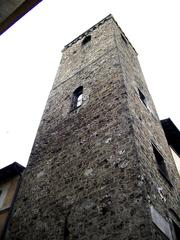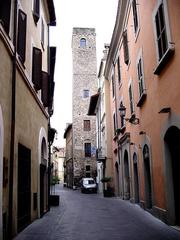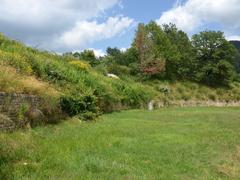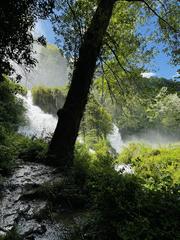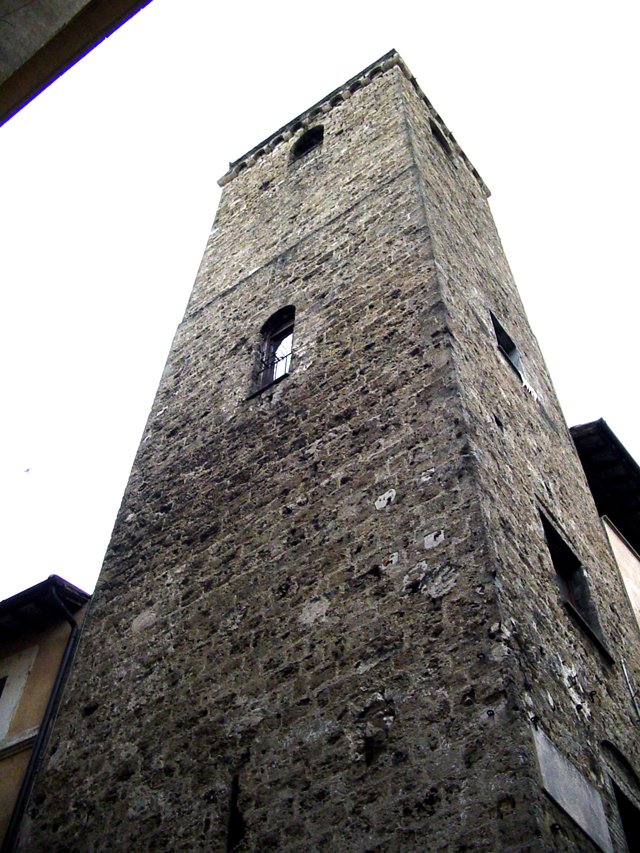
Torre Barbarasa: Visiting Hours, Tickets, and Historical Significance in Terni, Italy
Date: 14/06/2025
Introduction
Torre Barbarasa is a striking medieval tower located in the heart of Terni, Umbria. As one of the city’s most enduring architectural landmarks, it offers visitors a window into Terni’s rich history—from its medieval origins and defensive role to its unique religious and cultural significance. Though the tower’s interior is not regularly open to the public, its exterior remains a focal point for heritage exploration, walking tours, and local traditions.
This comprehensive guide provides detailed information on Torre Barbarasa’s history, architectural features, visiting hours, ticketing, accessibility, nearby attractions, and cultural importance. Whether you are a history enthusiast, a cultural traveler, or a local resident, this article will help you make the most of your visit to Terni’s storied medieval heart.
Table of Contents
- Introduction
- Medieval Origins and Construction
- Role in Terni’s Urban Landscape
- Architectural Features and Restoration
- Historical and Religious Significance
- Visiting Hours and Ticket Information
- Accessibility and Visitor Tips
- Nearby Attractions
- Notable Events and Anecdotes
- Frequently Asked Questions
- Conclusion and Call to Action
- References
Medieval Origins and Construction
Torre Barbarasa dates back to the 13th century, an era when Terni was a fortified commune and defensive towers signified both power and protection. Commissioned by the influential Barbarasa family, the tower was strategically integrated into the city’s medieval walls and designed as both a residence and a private stronghold. Built predominantly from local limestone and brick, it originally rose to approximately 30 meters, with walls over one meter thick—typical of Umbrian military architecture (Comune di Terni; Umbria Tourism).
Role in Terni’s Urban Landscape
Positioned near key civic and religious sites, Torre Barbarasa was part of Terni’s broader defense network. Its proximity to the rival Spada family’s property reflects the competitive nature of medieval urban development and the assertion of family status. The tower’s vantage point allowed for surveillance and communication with other towers, especially during periods of internal strife and external threat (Visit Terni).
Architectural Features and Restoration
The tower exemplifies the robust, utilitarian design of medieval Italy:
- Exterior: Square base, thick stone masonry, minimal decorative elements, and narrow slit windows for defense.
- Interior: Originally divided into storage areas on the lower floors and living spaces above, with a spiral staircase for internal circulation.
Over the centuries, Torre Barbarasa underwent various modifications. In the 16th century, as armed conflict waned, some defensive elements were replaced with arched windows and ornamental details. Modern restoration efforts have focused on preserving the tower’s medieval character, stabilizing its structure, and maintaining commemorative plaques, such as the one marking the 1657 blessing of the city during a plague (zerodelta.net; Soprintendenza Archeologia dell’Umbria).
Historical and Religious Significance
Beyond its architectural value, Torre Barbarasa holds deep religious and cultural resonance. In 1657, Bishop Sebastiano Gentili blessed the city from the tower during a devastating plague, using a relic of the Precious Blood of Jesus—a pectoral cross containing a splinter of the True Cross and a vial of Christ’s blood (New Daily Compass). This event, commemorated by a Latin plaque, is said to have marked the decline of the plague in Terni.
The relic remains a focal point of local devotion, housed in the Cathedral of Santa Maria Assunta and venerated during annual September celebrations. The tower’s association with these events underscores its role as a symbol of faith, resilience, and communal identity.
Visiting Hours and Ticket Information
As of June 2025, Torre Barbarasa is not generally open for interior visits because it is a private residence and a protected historic site. The exterior can be viewed at any time from Via Roma and surrounding streets.
Special Access:
Occasionally, guided tours including the tower’s interior are organized during cultural events such as the “Giornate FAI di Primavera.” Ticket prices for these events are typically:
- Adults: €5
- Reduced (students, seniors): €3
- Children under 12: Free
- Combination tickets (including nearby sites): €12
Check with the official Terni tourism portal or the local tourist office for up-to-date schedules and ticket availability.
Accessibility and Visitor Tips
- The tower’s exterior is fully accessible from the street and included in many walking tours.
- The area is pedestrian-friendly, but some cobblestone streets may challenge those with mobility issues.
- For those with limited mobility, contact the visitor center ahead of time for assistance during special events.
- Photography is permitted outside; if interior access is granted during special tours, check for restrictions.
Nearby Attractions
Torre Barbarasa is ideally situated for cultural exploration within Terni’s historic core. Notable nearby sites include:
- Cathedral of Santa Maria Assunta: Home to the relic of the Precious Blood.
- Palazzo Spada: A Renaissance palace reflecting the city’s evolving architecture.
- Piazza della Repubblica: A vibrant civic space.
- Terni Archaeological Museum: Showcasing local history from Roman to medieval times.
- Roman Amphitheatre: Evidence of Terni’s ancient past (thecrazytourist.com).
Notable Events and Anecdotes
- During the 1354 siege by Papal mercenaries, Torre Barbarasa is said to have served as a rallying point for defenders, with legends of secret passages aiding resistance (Storia di Terni).
- The 1657 blessing from the tower, using the relic of the Precious Blood, is central to Terni’s religious traditions and annual celebrations.
- The tower’s survival through centuries of urban development and warfare highlights its resilience and significance.
Frequently Asked Questions (FAQ)
Q: What are Torre Barbarasa’s visiting hours?
A: The tower can be viewed from the exterior at any time. Interior access is rare and only available during special guided tours or events.
Q: Is there an entry fee?
A: No fee for exterior viewing. Tickets may be required for special interior tours.
Q: Are guided tours available?
A: Yes, during certain cultural events and by arrangement with local heritage organizations.
Q: Is Torre Barbarasa accessible for those with disabilities?
A: The exterior is accessible, but cobblestones may be challenging. Interior access is via narrow stairs and is not suitable for wheelchairs.
Q: What is the significance of the relic of the Precious Blood?
A: It symbolizes Christ’s Passion and Redemption, is central to Terni’s religious traditions, and is directly linked to the tower’s historical narrative.
Conclusion and Call to Action
Torre Barbarasa stands as a testament to Terni’s medieval legacy, blending architectural heritage with stories of faith, resilience, and community identity. While its interior is seldom open, the tower’s commanding façade and storied past make it a must-see landmark for visitors and locals alike. Enhance your exploration of Terni by including Torre Barbarasa in your itinerary, and combine your visit with nearby historical sites for a richer cultural experience.
For up-to-date information on guided tours, special events, and cultural programming, download the Audiala app, subscribe to our newsletter, and follow us on social media.
References
- Comune di Terni
- Umbria Tourism
- Visit Terni
- Soprintendenza Archeologia dell’Umbria
- Enciclopedia Treccani
- Storia di Terni
- New Daily Compass
- zerodelta.net
- thecrazytourist.com
